Development of rearing and breeding techniques for experimental organisms
To examine the biological effect of environmental change and harmful chemicals precisely, it is necessary to use healthy organism. MERI is carrying out technical development to be able to produce and supply healthy experimental organisms consistently. MERI is also promoting the rearing and breeding for the conservation of rare marine and freshwater species.
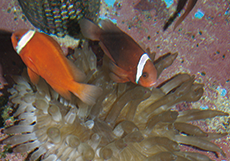 |
|
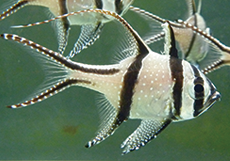 |
|
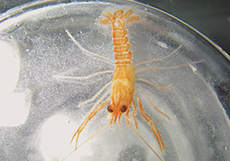 |
 |
| Tomato clownfish |
|
Banggai cardinalfish |
|
Japanese nephropid lobster |
 |
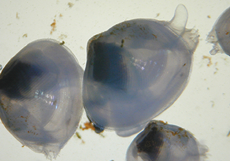 |
|
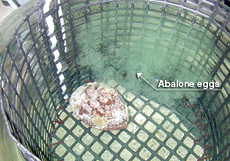 |
|
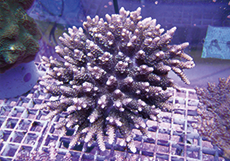 |
 |
| Juvenile of Sakhalin surf clam |
|
Japanese abalone (spawning) |
|
Acropora digitifera |
| |
Rearing facility
Our rearing facilities at the Central Research Laboratory and the Central Research Laboratory Kashiwazaki Station use seawater which can be controlled at any temperature to conduct breed and growth of specific organisms. We breed various organisms by controlling the light conditions (light quality, light intensity, sunshine hours) and temperature – that affect seriously the maturity of aquatic organisms. |
 |
 |
 |
Research facilities
at Central Research Laboratory |
|
Research facilities
at Central Research Laboratory Kashiwazaki Station |
 |
 |
| |
Seawater supply facility
Water intake capacity: 75 m3/hour (water intake from about 350 m offshore)
Filtration capacity: 25 m3/hour × 2 systems |
| |
Temperature control facility
Warm seawater at 32°C: 6 m3/hour. Cold seawater at 8°C: 3 m3/hour |
| |
Rearing facility
Water tank for seedling production, spawning tank with light-controlled device,
Temperature acclimatization water tank, temperature/salinity acclimatization water tank,
Broodstock management and spawning tank, etc. |
| |
|
| |
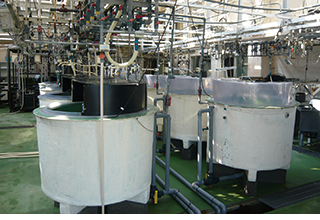 |
| |
Indoor tank (temperature acclimatization tank) |
|
| |
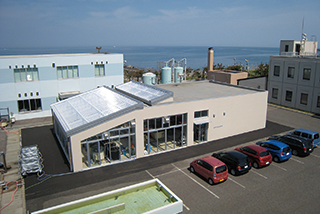 |
| |
Applied Ecology Experimental Facility (front) and Marine Organism Rearing Experimental Facility (left rear) |
| |
|
| |
Seawater supply facility
Water intake capacity: 200 m3/hour of natural seawater (water intake from auxiliary equipment channel in the power plant)
Thermal effluent: 200 m3/hour (water drawn from the thermal effluent afterbay inside the power station) |
| |
Seawater filtration supply facility
Natural seawater filtration capacity: 20 m3/hour × 2 systems
Thermal effluent filtration capacity: 20 m3/hour × 1 system
Seawater at 10-35°C: 7 m3/hour (marine organism rearing experimental facility) |
| |
Rearing facility
Broodstock management and spawning tank, juvenile fish development tank, etc. |
|
| |
|
|
Production of experimental organisms to meet research needs
MERI has been raising more than 230 species of aquatic organisms. We can breed and produce organisms to match any research or testing needs, in terms of species developmental stages and size of organisms. MERI improves technologies continually, finding better initial feeding techniques and rearing environments, and provides a more stable and consistent supply of healthy organisms. |
|
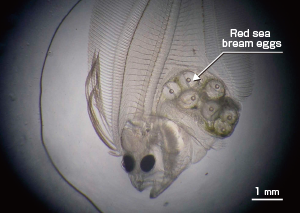
Feeding flounder larvae
Feeding with nutritious food (fish eggs) |
| ・Aquatic organisms that have been reared and bred at MERI |
 |
Fish: |
|
Mottled spinefoot, Greenling, Small-scale sillago, Horsehead tilefish, Banggai cardinalfish, Whitespotted pygmy filefish, Ayu, Pacific sandlance, Chicken grunt, Barred knifejaw, Threadfin cardinalfish, Bower's parrotfish, Devil stinger, Marbled rockfish, Japanese anchovy, Yellowfin seabream, Bigeye trevally, Longtooth grouper, Korean rockfish, Black seabream, Girella leonina, Jarbua terapon, Cherry salmon, Chum salmon, Masu salmon, White trevally, Japanese butterflyfish, Japanese sillago, White horsehead, Japanese sea bass, Pearl-spot chromis, Kawakawa, Neon damselfish, Red seabream, Threadfin butterflyfish, Japanese puffer, Steephead parrotfish, Pacific herring, Rainbow trout, Honnibe croaker, Sailfin sandfish, Tomato clownfish, Spangled emperor, Short barbeled velvetchin, Blackfin seabass, Bastard halibut, Japanese amberjack, Goldlined seabream, Spiny red gurnard, Spotted halibut, Oriental sillago, Starspotted smooth-hound, Flathead grey mullet, Japanese horse mackerel, Marbled flounder, Bartail flathead, Red seabream, Pacific cod, Okinawa seabream, Tokyo bitterling, Japanese rockfish, Silver sillago, etc. |
| |
Crustaceans: |
|
Paracanthomysis hispida, Japanese spiny lobster, Gazami crab, Kuruma prawn, Tigriopus japonicus, Archeomysis vulgaris, Palaemon serrifer, Caprella danilevskii, Gammaridea, etc. |
| |
Shellfish: |
|
Akoya oyster, Asari clam, Sakhalin surf clam, Japanese disk abalone, Turbo sazae, Asian hard clam, Pacific oyster, Asian green mussel, Mediterranean mussel, etc. |
| |
Squid: |
|
Oval squid, Kisslip cuttlefish |
| |
Echinoderms: |
|
Red sea urchin, Long-spined sea urchin, Brittle sea star, Northern sea urchin, Green sea urchin, Japanese purple sea urchin, etc. |
| |
Polychaetes: |
|
Perinereis wilsoni |
| |
Cnidarian animals: |
|
Acropora tumida, Acropora solitaryensi, Acropora hyacinthus, Acropora digitifera, Acropora muricata, Moon jelly, etc. |
| |
Seaweeds: |
|
Sea lettuce, Sargassum horneri, Eisenia bicyclis, Fucales sargassaceae, Porphyra pseudolinearis, Sargassum ringgoldianum, Gracilaria, Ecklonia cava, Gracilariales, Gelidium elegans, Sargassum piluliferum, Sargassum siliquastrum, Wakame, etc. |
| ・Supply of organisms, according to the test period |
 |
Mature spawning controls: |
|
Japanese sillago, Short barbeled velvetchin, Red seabream, shellfish, seaweed, etc. |
| ・Organisms kept breeding for generations |
 |
Banggai cardinalfish, Pacific sandlance, Japanese sillago, Short barbeled velvetchin, Red seabream, Tigriopus japonicus, Japanese Ivory shell, etc.
We supply various kinds of organisms at every developmental stage. |
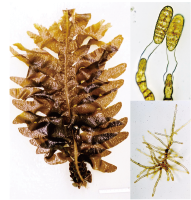 |
|
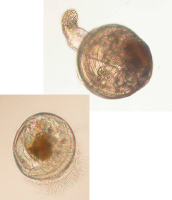 |
|
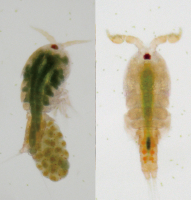 |
|
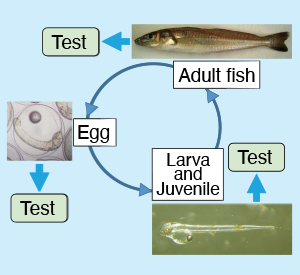 |
 |
Wakame
(left: spore, top right: sporophyte, bottom right: gametophyte) |
|
Asian hard clam
(Left: Umbo larva, Right: Juvenile clam) |
|
Tigriopus japonicus
(Left: Female, Right: Male) |
|
Planned production according
to the test requirements
(in the case of Japanese sillago) |
| |
Application of breeding technology to endangered species conservation
We have succeeded in artificial spawning and rearing of the endangered small-scale sillago, and, carried out successive breeding. In addition, we have provided rearing and breeding guidance of Tokyo bitterling, a natural monument of Japan (implemented in response to a request for cooperation from Onjuku-machi, Chiba). |
|
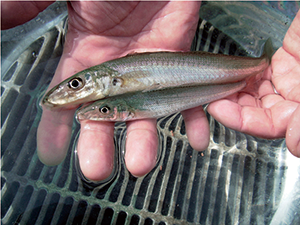
Produced small-scale whiting |
|
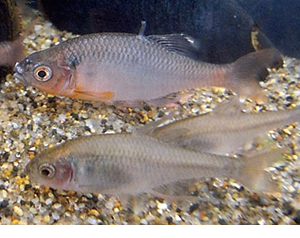
Tokyo bitterling |
|